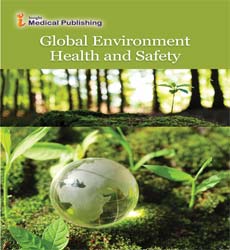Butterfly-flower interactions and biodiversity in the changing environments
Butterflies occupy a vital position in the ecosystem and are useful as indicators of environmental change. Their occurrence depends on the climatic dicta, the presence of suitable caterpillar foods and appropriate adult nectar sources or other food, suitable arenas for flight and courtship. These insects enhance the aesthetic value of the environments by their exquisite wing colors. Butterflies are the wild indicators of the ecosystem; these insects tell us everything about the healthier ecosystem. These are effective pollinators, butterflies visit the flower to eat nectar and this is often interdependent relationship. Some species of butterflies migrate over long distance; carry pollen to be shared across plants which are far aside from each other. This migration of pollens induces genetic variation in plants species and gives a better chance at survival against different disease. These insects also provide food for other organisms, for example; birds, reptiles amphibians and also acts as biological pest control. But the population of those insects decline rapidly thanks to human activities, habitat destruction, uses of pesticides and unawareness of individuals about the importance of flying flowers. They require a continuous supply of food sources, especially nectar sources from a number of plant species. In this context, floral morphological and nectar characteristics are important for visitation by butterflies. Nectar plays an important role in the nutrition of adult butterflies. Nectar is a highly enriched food resource consisting of carbohydrates, amino acids, lipids, antioxidants, alkaloids, proteins, vitamins, salts, etc. But, all these nutrient chemicals are not found in a single floral nectar source and hence flower visiting butterflies should pay visits to different floral nectars to acquire all the required nutrients. The butterfly interactions with the flowers of certain plant species are going to be detailed. Plant species which facilitate foraging by butterflies show certain floral traits adapted for butterfly foraging activity and within the process both get benefited. With accelerated deforestation and changing ecology and subsequent change in the environment, the butterflies appear to be struggling to get the required levels of quality nectar for survival during their adult life. The summer season is extremely crucial for butterflies since a couple of plants bloom during this era.
Open Access Journals
- Aquaculture & Veterinary Science
- Chemistry & Chemical Sciences
- Clinical Sciences
- Engineering
- General Science
- Genetics & Molecular Biology
- Health Care & Nursing
- Immunology & Microbiology
- Materials Science
- Mathematics & Physics
- Medical Sciences
- Neurology & Psychiatry
- Oncology & Cancer Science
- Pharmaceutical Sciences
